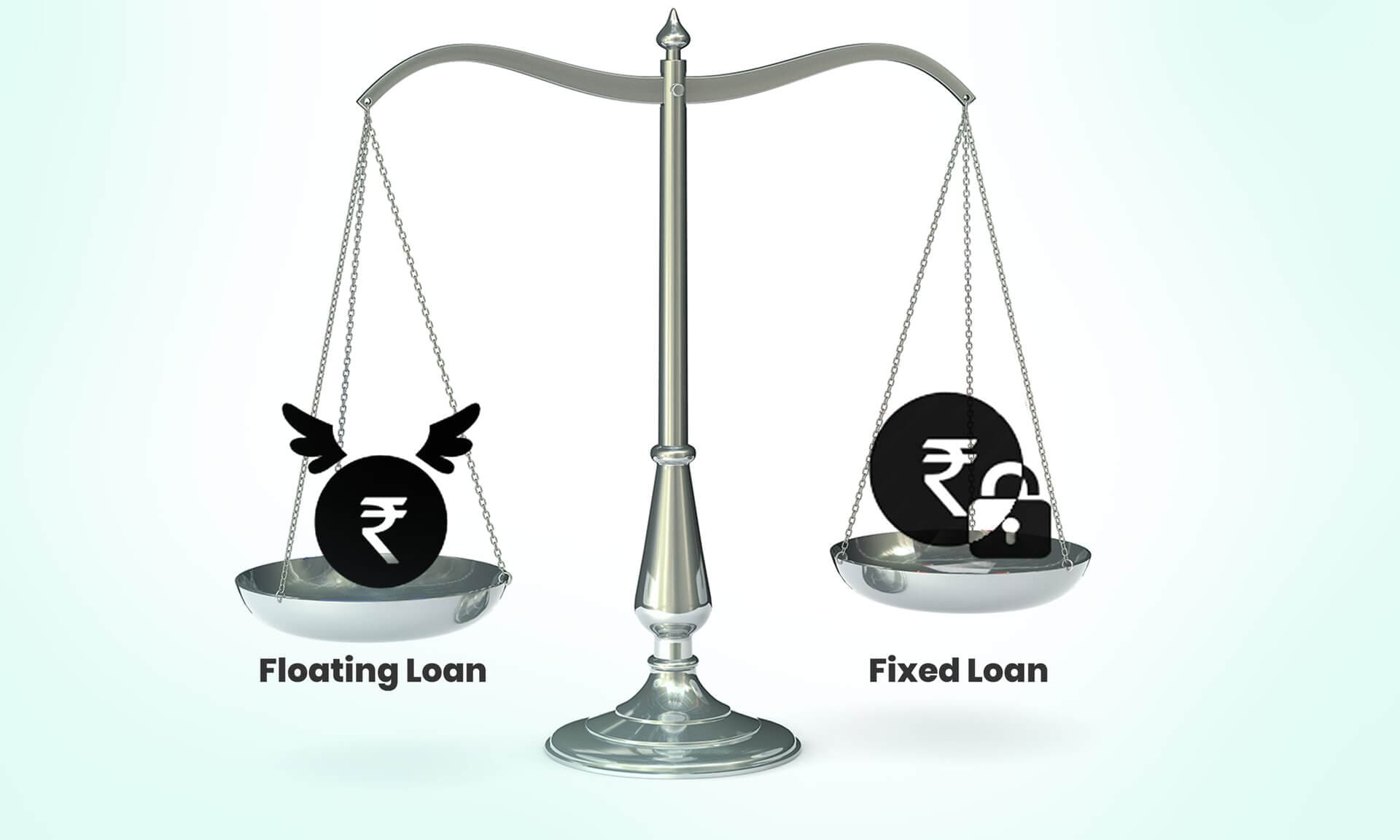When it comes to borrowing money, you may have thought about which one to choose – Flat rate of interest or Floating rate of Interest. Both have their own unique features, benefits, and drawbacks, making it important to understand the difference between them to make an informed decision.
In this blog, we will explore the features, benefits, and disadvantages of both flat rate and floating rate of interest and provide an example of the Indian scenario. Finally, we will also discuss which one is preferred by borrowers.
Flat Rate of Interest
A flat rate of interest is a fixed rate that remains unchanged throughout the loan term. The interest rate is calculated as a percentage of the loan amount and remains the same until the loan is fully repaid. For example, if you take a loan with a flat rate of 8% per annum, your interest rate will remain the same throughout the loan term.
Features:
- Fixed interest rate – The interest rate remains unchanged throughout the loan term.
- Easy to understand – The flat rate of interest is straightforward and easy to understand.
- Predictable monthly repayments – Since the interest rate remains the same, you can easily calculate your monthly repayments and budget accordingly.
Also, read How to Get Business Loan Without Collateral in 2023?
Benefits:
- Budgeting – With a flat rate of interest, you can easily calculate your monthly repayments, making it easier to budget for the loan.
- Stable cash flow – With a fixed interest rate, your monthly repayments will remain the same, which can help you manage your cash flow more effectively.
- Lower risk – The interest rate is fixed, so there is no risk of it changing, which can be a benefit for those who are risk-averse.
Disadvantages:
- Higher interest rate – Flat rates of interest are usually higher than floating rates, which means you may end up paying more in interest over the life of the loan.
- Lack of flexibility – Since the interest rate is fixed, you cannot make changes to your loan if market rates change, which can limit your flexibility.
Floating Rate of Interest:
A floating rate of interest is a variable rate that changes over time based on market conditions. The interest rate is usually tied to a benchmark rate, such as the Reserve Bank of India (RBI) policy rate, and can go up or down depending on market conditions.
Features:
- Variable interest rate – The interest rate can change over time, depending on market conditions.
- Tied to a benchmark rate – The interest rate is usually tied to a benchmark rate, such as the RBI policy rate.
- Riskier – Since the interest rate can change, the floating rate of interest is considered riskier than the flat rate of interest.
Benefits:
- Lower interest rate – Floating rates of interest are usually lower than flat rates, which means you may pay less in interest over the life of the loan.
- Flexibility – With a floating rate of interest, you have the flexibility to make changes to your loan if market rates change, which can be a benefit for those who are looking for more flexibility.
Disadvantages:
- Unpredictable monthly repayments – Since the interest rate can change, it can be difficult to predict your monthly repayments, making it harder to budget for the loan.
- Higher risk – The interest rate is variable, so there is a higher risk of it changing, which can be a drawback for those who are risk-averse.
Flat Rate of Interest or Floating Rate of Interest
In India, the choice between a flat rate and floating rate of interest depends on an individual’s financial goals, risk tolerance, and budgeting needs.
For example, a borrower who values stability and has a low-risk tolerance may prefer a flat rate of interest. This is because a flat rate offers predictable monthly repayments, making it easier to budget and manage cash flow. However, this option may come with a higher interest rate.
On the other hand, a borrower who is looking for more flexibility and is willing to take on higher risk may prefer a floating rate of interest. This is because floating rates are usually lower than flat rates, meaning lower interest costs over the life of the loan. However, the interest rate is variable, which means the monthly repayments can change, making it more difficult to budget and manage cash flow.
Ultimately, the decision between a flat rate and floating rate of interest will depend on the borrower’s specific financial goals and needs. It is recommended to consult with a financial advisor or do thorough research before making a decision.
Conclusion
Both flat rate and floating rate of interest have their own unique features, benefits, and disadvantages. While a flat rate of interest offers stability and predictability, it may come with a higher interest rate. On the other hand, a floating rate of interest may offer lower interest costs but with the risk of unpredictable monthly repayments.
The choice between the two will ultimately depend on the borrower’s financial goals, risk tolerance, and budgeting needs. It is important to carefully consider both options and consult with a financial advisor before making a decision.
